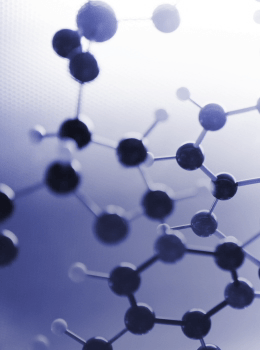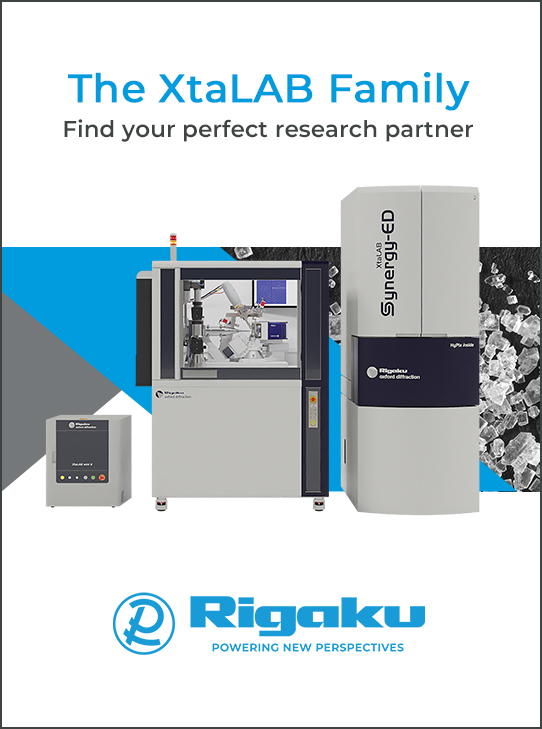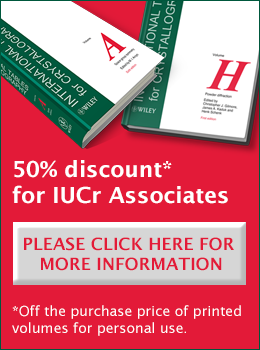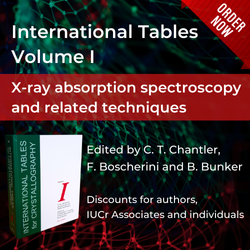
Special report
Adding Open Science to the modern discovery and applications toolbox in crystallography
![Thumbnail [Thumbnail]](https://www.iucr.org/__data/assets/image/0012/158889/open-science-1.png)
Introduction
Open Science is a movement for change in research practices. It started with open access to publications and is now being significantly elaborated by UNESCO and the International Science Council (ISC). Their approach was explained in a milestone event held in June 2022 [1]. An overarching principle is that taxpayers have paid for research so it should be open by default as its aims are always ultimately for the public good. Over the past few years, an extensive consultation by UNESCO has led them to conclude that it would be best for both the Global South and the Global North to adopt Open Science. Recently, UNESCO held numerous discussions via Zoom, which I have attended on behalf of the IUCr. In my Annual Report for the IUCr Executive Committee submitted in April this year, I summarized these UNESCO discussion forums and quote my report below. As these proposals are momentous in scope, I offer this article in the IUCr Newsletter to engender wider discussion.
As further background, I recall that UNESCO's Recommendation on Open Science was adopted by the General Conference of UNESCO at its 41st session on 23 November 2021 [2]. The Recommendation affirmed the importance of open science as a vital tool to improve the quality and accessibility of scientific outputs and scientific process, bridge the science, technology and innovation gaps between and within countries, and fulfil the human right of access to science.
UNESCO Working Groups
UNESCO then convened five ad hoc Working Groups focusing on key impact areas:
- Open Science Capacity Building
- Open Science Policies and Policy Instruments
- Open Science Funding and Incentives
- Open Science Infrastructures
- Open Science Monitoring Framework
bringing together experts and open-science entities, organizations and institutions according to their field of activity and expertise.
These Working Groups each had at least three virtual events, some now four, and the recordings are available [3]. A key output is a helpful toolkit [4], which includes a checklist for publishers [5].
A linked event to the UNESCO efforts was a three-day hybrid event on Open Science in February 2023 organized by the UN Library [6]. This event focused on accelerating the UN Sustainable Development Goals (SDGs) and democratizing the record of science.
On behalf of the IUCr, I made specific inputs into these various events on (i) the importance of global collaborative sharing of instrumentation [7] and (ii) a fine example of open science in practice: the ESRF (European Synchrotron Radiation Facility) heritage database for palaeontology, evolutionary biology and archaeology [8]. Basically, so much of these data can be measured quickly at ESRF that Europe's palaeontologists decided to share all their data with the world's palaeontologists to allow analysis of the data as promptly as possible.
Reform of publishing
A specific conclusion from the UN/UNESCO deliberations features the growing importance of, and seeking of funds for, prioritizing diamond (sometimes called platinum) open access for publications. Diamond open access refers to a scholarly publication model in which journals and platforms do not charge fees to either authors or readers, for example see [9]. This approach addresses the challenge perceived by UNESCO for the Global South of article processing charges (APCs) for authors. A group disadvantaged by APCs are researchers from low-to-middle income countries. Fluctuating currency exchange rates can significantly reduce purchasing power. Others disadvantaged by APCs, around the whole world, include retired or out-of-work scientists or even researchers from institutions on restricted budgets. In mid-December 2023, all the above work by UNESCO on open science led to the launch event [10].
Linked with this UNESCO effort is that of the ISC in calling for feedback on the reform of scientific publishing [11], again emphasizing openness. I provided detailed input in consultation with the Editor-in-Chief of IUCr Journals, Andrew Allen, and the Executive Managing Editor, Peter Strickland. This emphasized the importance of pre-publication peer review of articles with a data and checking report, such as the IUCr’s checkCIF and the Protein Data Bank’s Validation Reports, which both ensure trust in our scientific publications. This can still allow for post-publication peer review where necessary via refereed critique articles, the process consistently adopted in IUCr Journals. These are, however, a very rare occurrence. Probably the most well known were the space group corrections in crystal structure publications reported by Dick Marsh in the pre-2000s decades.
Industry and the UN SDG 9
UNESCO's work involving industry's needs is not explicitly covered so far. This is important, as recognized by the UN SDG 9 [12]. Indeed, there are aspects of industry's work that can be open, notably at the pre-competitive phase. An example of such collaborative work among companies is the Industrial Macromolecular Crystallography Association (IMCA) Collaborative Access Team at the Advanced Photon Source in Argonne [13].
My critique of some assumptions
Besides not consulting industry, there are also implicit assumptions made by the ISC and UNESCO that are incorrect. Firstly, there is a confusion that FAIR data always equals Open Science. Secondly, there is an assumption that uncertainty estimates on data are somehow unnecessary. Thirdly, they assert that pre-publication peer review is not where proper peer review is done but happens only post-publication. Thus, they confuse reproducibility with replicability, terms that are very well described by the US National Academies report [14]. They even advocate doing away with journals in favour of preprints.
The ISC does realize, though, that different areas of science may vary in their approach [1]. For us crystallographers, the very basis of the crystallographic tradition of careful validation of data underpinning our journal articles, as exemplified by our excellent databases [15], can be argued as the best approach. In other areas of science, such as cognitive neuroscience and the behavioural and social sciences, pre-registered reports have been introduced [16]. These allow researchers to be open by default because the methods and proposed analyses are pre-registered and peer-reviewed before the research is conducted.
Conclusions
I would stress the following positives that commend adding or expanding Open Science in our research toolbox beyond that already achieved, such as with the IUCr's open-access journals (IUCrJ, Journal of Synchrotron Radiation, Acta Cryst. E and IUCrData). I would firstly mention the need to improve how society tackles neglected diseases, such as the Drugs for Neglected Diseases projects [17], where industry is much less interested, if at all, but where a fully open global collaborative approach could deliver hugely. UNESCO, as well as the World Health Organization, is aware that global funding schemes could really help here. Secondly, measured raw data that have not led to eventual publication need opening to wider sharing and exploitation, as led by the EU's PaNOSC project [18]. So, I agree with the funding agencies' push on this front, certainly in Europe and most recently in the USA. Our IUCrData Raw Data Letters initiative offers one such route [19].
Also, it is noteworthy that in an extensive 'scoping review', the most impactful domain for Open Science thus far is Citizen Science [20]. So, we can be encouraged to continue and even expand our crystal growth competitions as one of our citizen science project themes and maybe initiate new themes for Open Crystallographic Science. A range of ideas is provided by the Center for Open Science in Charlottesville, VA, USA, via their Open Science Framework (OSF). This is a free open-source software project that facilitates open collaboration in science research. It is neatly explained in a 14-minute ‘basics’ video [21]. An easy win in my view of an OSF would be to openly report negative results or outcomes, rather than the generally always positive outcomes in our peer-reviewed publications.
Acknowledgements
I am very grateful to Andrew Allen, Editor in Chief of IUCr Journals; Peter Strickland, Executive Managing Editor of IUCr Journals; Mike Glazer, IUCr Newsletter Editor; and Alice Brink, IUCr Committee on Data (CommDat) member, for detailed discussions and comments.
References
1. https://council.science/events/isc-members-session-on-the-unesco-open-science-recommendation/
2. https://www.unesco.org/en/open-science?hub=686
3. https://www.unesco.org/en/open-science/implementation
4. https://www.unesco.org/en/open-science/toolkit
5. https://unesdoc.unesco.org/ark:/48223/pf0000383327
6. https://www.un.org/en/library/OS23
9. Action Plan for Diamond Open Access, March 2022. Brussels: Science Europe.
10. https://www.unesco.org/en/articles/open-science-outlook-1-status-and-trends-around-world-0
11. https://council.science/publications/reform-of-scientific-publishing/
12. https://www.un.org/sustainabledevelopment/infrastructure-industrialization/
16. https://www.nature.com/nature/for-authors/registered-reports
21. Getting to Know the OSF: The Basics.
Emeritus Professor John R. Helliwell, DSc, is IUCr Representative to UNESCO's Open Science Working Groups. E-mail: john.helliwell@manchester.ac.uk
Copyright © - All Rights Reserved - International Union of Crystallography








